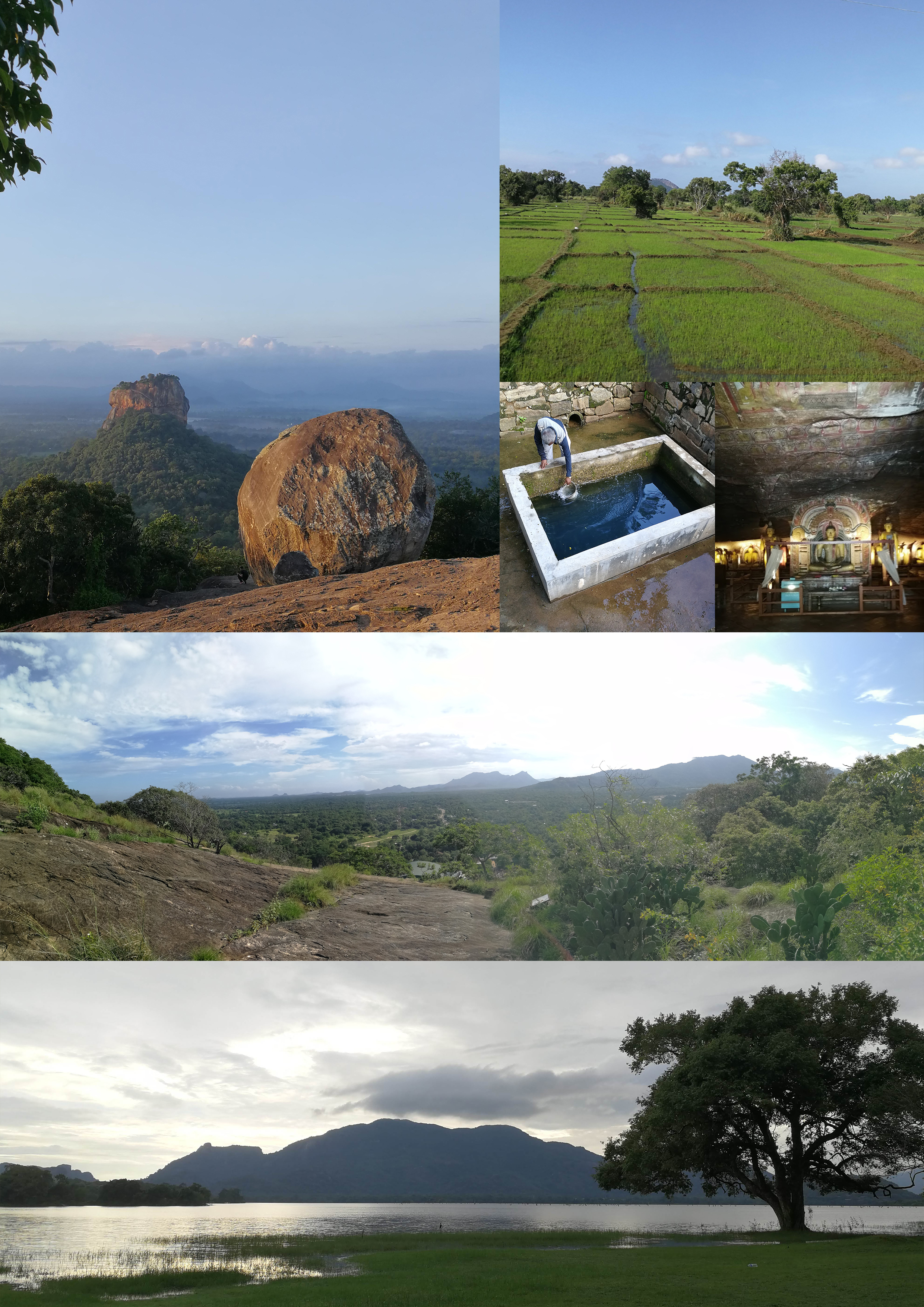แนวทางการอนุรักษ์มรดกทางธรรมชาติและมรดกทางวัฒนธรรมที่เน้นผู้คนเป็นศูนย์กลาง
Main Article Content
บทคัดย่อ
บทความนี้ศึกษาการเปลี่ยนกระบวนทัศน์ในงานอนุรักษ์มรดกทางธรรมชาติและมรดกทางวัฒนธรรมจาก “การสงวนรักษามรดก” ไปสู่ “ความอยู่ดีมีสุขของทั้งมรดก และสังคมโดยรวม” บนพื้นฐานของความพยายามปกป้องมรดกทางธรรมชาติและมรดกทางวัฒนธรรม โดยมีผู้คนและชุมชนเป็นศูนย์กลางได้เน้นย้ำเรื่องความเป็นอยู่ที่ดีของสังคมจากระบบ รวมทั้งกระบวนการจัดการและคุ้มครองมรดก โดยตระหนักถึงเป้าหมายการพัฒนาที่ยั่งยืน เพื่อการเสริมสร้างความเข้าใจของผู้คนและชุมชนในฐานะองค์ประกอบหลักของการจัดการมรดก และเพื่อให้มั่นใจได้ว่ามรดกทางธรรมชาติและมรดกทางวัฒนธรรมที่เป็นประโยชน์และเป็นพลวัตในสังคมปัจจุบันและอนาคต โดยการสังเคราะห์เชิงคุณภาพ ผ่านการคัดเลือกงานวิชาการและกรณีศึกษาในกระบวนการมรดกโลกมาวิเคราะห์และจัดหมวดหมู่โดยอาศัยประเด็นการสังเคราะห์ 3 ด้าน คือ 1) แหล่งมรดกคุณค่าและบริบท 2) การกำกับดูแลแหล่งมรดก และ 3) การดำเนินการจัดการแหล่งมรดก กระบวนทัศน์ใหม่ของการอนุรักษ์และจัดการมรดกนี้ จะตอบสนองต่อปัญหาที่ซับซ้อนมากขึ้นที่จะถูกนำมาปรับใช้กับสภาพสังคมและสิ่งแวดล้อมที่ต่างกัน ทำให้ความเชื่อมโยงกันระหว่างมรดกทางธรรมชาติและมรดกทางวัฒนธรรมกลายเป็นเครื่องมือสำคัญในการสื่อความหมาย การอนุรักษ์ และการจัดการอย่างยั่งยืนของทั้งแหล่งทางธรรมชาติและแหล่งทางวัฒนธรรม ผ่านการมีส่วนร่วมของผู้คนที่ต้องเริ่มตั้งแต่กระบวนการให้คุณค่า ไม่ใช่ที่ปลายทางของการอนุรักษ์ที่แค่เปิดโอกาสให้ผู้คนรับรู้ถึงคุณค่าของแหล่งมรดก แต่เพียงทางเดียว ซึ่งนับเป็นความท้าทายที่สำคัญอันหนึ่งที่เกี่ยวข้องกับภาระหน้าที่และการปฏิบัติงานของหน่วยงานที่กำกับดูแลแหล่งมรดกในทุกระดับ
Article Details
เอกสารอ้างอิง
Albert, M.T. (2012). Perspectives of world heritage: towards future-oriented strategies with the five ‘Cs’. In Albert, M. T., et al. (Eds.). Community development through world heritage. (pp.32-38). Paris: UNESCO.
Brown, J. & Hay-Edie, T. (2013). COMPACT: engaging local communities in stewardship of World Heritage. New York: United Nations Development Programme.
Boccardi, G. (2015). From mitigation to adaptation: a new heritage paradigm for the Anthropocene. In Albert, M.T. (Ed.). Perceptions of sustainability in heritage studies. (pp.87–98). Berlin: De Gruyter.
Carmichael, D. L., et al. (1994). Sacred sites, sacred places. New York: Routledge.
Descola, P. (2005). Beyond nature and culture. In Marshall, P. J. (Ed.). Proceedings of the British Academy, Volume 139, 2005 Lectures. (pp.137-155). London: British Academy.
Franco, J. L. A. (2013). The concept of biodiversity and the history of conservation biology: from wilderness preservation to biodiversity conservation. História (São Paulo), 32 (2), 21-48.
International centre for the study of the preservation and restoration of cultural property. (2015). People-centred approaches to the conservation of cultural heritage: living heritage. Rome: Author.
Istudor, N., et al. (2014). Changing management paradigms in nature conservation. In International Conference on Competitiveness of Agro-food and Environmental Economy Proceedings, 2014. (pp. 137-155). Retrieved January 15, 2020, from https://econpapers.repec.org/article/aesicafee/v_3a3_3ay_3a2014_3ap_3a20-25.htm
Jokilehto, J. (1986). A history of architectural conservation: the contribution of English, French, German and Italian thought towards an international approach to the conservation of cultural property. (Doctoral dissertation). England: The University of York.
Jopela, A. (2011). Traditional custodianship: a useful framework for heritage management in Southern Africa. Conservation and Management of Archaeological Sites, 13, 103-122.
Jopela, A. (2016). Traditional management systems at heritage sites in Africa. Midrand: African World Heritage Fund.
Katriina, S. & Inger, S. (2014). Exploring the scientific discourse on cultural sustainability. Geoforum, 51, 213-223.
Keurs, T. P. (2019). Heritage is never neutral, it’s always interpreted. Retrieved January 5, 2020, from https://www.leiden-delft-erasmus.nl/en/news/heritage-is-never-neutral-its-always-interpreted
Klein, B. (2006). Cultural heritage, the Swedish folklife sphere, and the others. Cultural Analysis, 5, 57-80.
Kretzmann, J. P., & McKnight, J. L. (1993). Building communities from the inside out: a path toward finding and mobilizing a community’s assets. Skokie: ACTA Publications.
Lertpaithoon, S. (2000). Phraratchabanyat kamnot phaen lae khanton karn krachai amnat hai kae ongkon pokkhrong suan thongthin pho so song phan ha roi si sip song. (In Thai) [Decentralization according to determining plans and process of decentralization to local government organization act B.E. 2542. Bangkok: Thammasat University.
Mason, R. (2002). Assessing values in conservation planning: methodological issues and choices. In De La Torre, M. (Ed.). Assessing the Values of Cultural Heritage. (Research report). (pp.5−30). Los Angeles: The Getty Conservation Institute.
Miura, K. (2005). Conservation of a ‘living heritage site’ a contradiction in terms? a case study of Angkor world heritage site. Conservation and Management of Archaeological Sites, 7 (1), 3−18.
Phillips, A. (2002). Management guidelines for IUCN category V protected areas: protected landscapes/seascapes. Cambridge: IUCN.
Poulios, I. (2014). Past in the present: a living heritage approach - Meteora, Greece. London: Ubiquity Press.
Puang-ngam, K. (2000). Karn pokkhrong thongthin Thai. (In Thai) [Thailand local governance]. Bangkok: Winyuchon.
Tansukanun, P. (2019). Phuentee nai chiwit pracham wan khong chumchon lawaek ban nai khet kamphaeng mueang Chiangmai. (In Thai) [Daily life space of a local neighbourhood in the old city of Chiang Mai]. Journal of Environmental Design, 6 (2), 85-109.
Taruvinga, P. (2007). Community participation and rock art management in Zimbabwe. In Deacon, J. (Ed.). Proceedings of the 2004 International Rock Art Conference. (pp. 39-48). Nairobi: TARA.
Taylor, B. (2005). Encyclopedia of religious and nature. London: Thoemmes Continuum.
The international council of monuments and sites. (2011). Guidance on heritage impact assessments for cultural World Heritage properties. Paris: Author.
Thomas, L. & Middleton, J. (2003). Guidelines for management planning of protected areas. Retrieved January 3, 2020, from https://portals.iucn.org/library/efiles/documents/PAG-010.pdf
UNESCO. (2007). World heritage: challenges for the millennium. Paris: World Heritage Centre.
UNESCO. (2013). Managing cultural world heritage. Paris: World Heritage Centre.
UNESCO. (2015). World heritage no.75: culture - nature links. Retrieved January 8, 2020, from http://whc.unesco.org/en/review/75/
Van Bommel, S. & Turnhout, E. (2012). The (onto) politics of classifying biocultural diversity: a tale of chaos, order and control. In Arts, B., et al. (Eds.). Forest-people interfaces. (pp.223-238). Wageningen: Wageningen Academic Publishers.
Van Rensburg, L. & Koltze, L. (2003). Legislative protection of cultural heritage resources: a South African perspective. Queensland University of Technology Law and Justice Journal, 3, 121-140.
Wijesuriya, G., Thompson, J. & Court, S. (2017). People-centred approaches: engaging communities and developing capacities for managing heritage. In Chitty, G. (Ed.). Heritage, conservation and communities: engagement, participation and capacity building. (pp. 34-50). London: Routledge.


